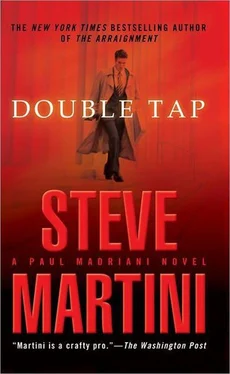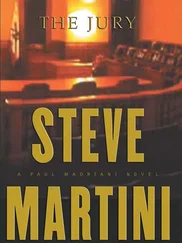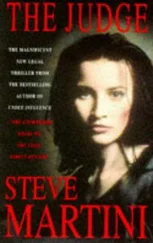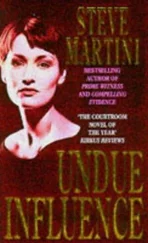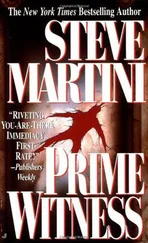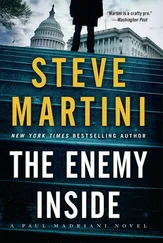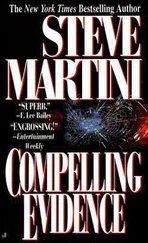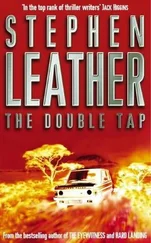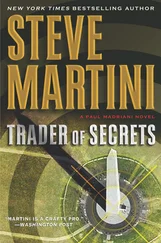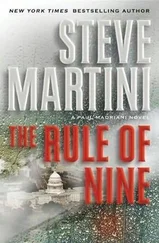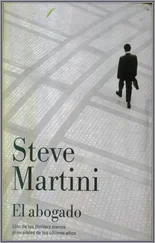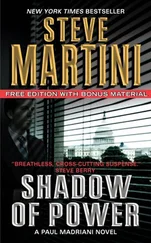Steve Martini - Double Tap
Здесь есть возможность читать онлайн «Steve Martini - Double Tap» весь текст электронной книги совершенно бесплатно (целиком полную версию без сокращений). В некоторых случаях можно слушать аудио, скачать через торрент в формате fb2 и присутствует краткое содержание. Год выпуска: 2014, ISBN: 2014, Издательство: Jove, Жанр: Триллер, на английском языке. Описание произведения, (предисловие) а так же отзывы посетителей доступны на портале библиотеки ЛибКат.
- Название:Double Tap
- Автор:
- Издательство:Jove
- Жанр:
- Год:2014
- ISBN:9781101550229
- Рейтинг книги:4 / 5. Голосов: 1
-
Избранное:Добавить в избранное
- Отзывы:
-
Ваша оценка:
- 80
- 1
- 2
- 3
- 4
- 5
Double Tap: краткое содержание, описание и аннотация
Предлагаем к чтению аннотацию, описание, краткое содержание или предисловие (зависит от того, что написал сам автор книги «Double Tap»). Если вы не нашли необходимую информацию о книге — напишите в комментариях, мы постараемся отыскать её.
Double Tap — читать онлайн бесплатно полную книгу (весь текст) целиком
Ниже представлен текст книги, разбитый по страницам. Система сохранения места последней прочитанной страницы, позволяет с удобством читать онлайн бесплатно книгу «Double Tap», без необходимости каждый раз заново искать на чём Вы остановились. Поставьте закладку, и сможете в любой момент перейти на страницу, на которой закончили чтение.
Интервал:
Закладка:
“I don’t know. I don’t remember,” he says.
“Regardless of what it’s made of, we know it’s not made of goose feathers or foam rubber. So, wouldn’t you expect a heavy object like the firearm in your hand, when thrown from some distance, to at least get scratched or dented somewhere when it strikes a solid object like a fence or a wall?”
“Not necessarily,” he says. “It’s possible it didn’t hit the wall at all-that perhaps the perpetrator just didn’t throw it far enough. It could have just landed in the flower bed.”
“Ahh. Theory number two,” I say. “The feeble-armed killer.”
As I turn from the witness, a couple of jurors crack a smile.
I can tell by the look on Templeton’s face he knows he’s in trouble. He’d like to get the witness off the stand. If he had a hook, he’d use it now.
“How far would you say it is from the back edge of the patio at the victim’s house to the point at the edge of the grass where the gun was found by the officer? Did you measure it?”
Perryman shakes his head.
“You have to speak up.”
“No. I didn’t measure it.”
“I did. Would you be surprised if I told you it was thirty-two feet four inches?”
“I’ll take your word for it,” he says.
“Maybe we could have the photograph back up on the visualizer.” I turn toward Templeton.
He looks at me like I’m a man from Mars.
“The state’s photograph of the firearm in the rose bed,” I say.
“Ah.” He nods toward his computer assistant, and a second later the picture is back up on the visualizer.
“Can you see the picture?” I ask the witness.
“Yes.”
“Can you show me where this gun, the one in your hand, the one that weighs just a little under two and a half pounds, made an impression in the soil when it landed in the flower bed under the rosebush there?”
The look on Perryman’s face is that of a deer in the headlights. He doesn’t respond.
“You did say that no one touched the gun before it was photographed, is that correct?”
“Yeah. Yeah, that’s right.”
“Well, where is the impression in the soil where it landed?” There is a small puddle of water just at the bottom left corner of the photo. The ground is wet.
Herman checked it. The sprinkler system at Chapman’s house was on a rotating timer. It was set to water the entire yard, front and back, every day. The area around the bushes in the back had been soaked for over an hour just after three in the afternoon on the day of the murder. The killer dragged traces of soft peat from his shoes into the house near the window where he entered. The cops looked for shoe prints in the mud but found none. The killer was careful enough to stay mostly on the flat flagstones that formed a path through the garden to the back of the house.
I repeat the question: “Do you see an impression in the soil where the gun landed?”
“Maybe it bounced on the lawn,” he says.
“Well, then, where’s the skid mark in the mud? Wouldn’t you expect that if something weighing almost two and a half pounds and made of case-hardened steel were thrown, say, thirty feet, and bounced on the lawn and came to rest in the flower bed that it would disturb at least a little bit of the soil underneath the rosebush where it came to rest?”
“I don’t know,” he says.
I can tell by looking that Templeton would like to put his head in his hands at this point. But he resists the urge. At one time or another we have all been there.
“Let me ask you: Do you see any marks at all in the soil in that photograph?”
“I don’t know,” he says. “I can’t tell.”
“Well, you and your staff took the photographs, didn’t you?”
“Yeah.”
“I don’t see any marks in the soil, and the photograph looks pretty clear to me .”
“Objection.”
“Sustained. The jury will disregard the comment by counsel.”
They may disregard it, but unless they are blind, they can’t help but notice the undisturbed surface of the flower bed.
“Let me suggest another theory to you and ask you whether that theory is not in fact more plausible, given the physical evidence contained in your own photograph. Isn’t it more likely, given what you can see up there on that screen, that whoever shot Madelyn Chapman didn’t throw the gun at all but placed the gun-the one in your hand, the one weighing two and a half pounds-in the flower bed so that you could do exactly what you did do: find it there?”
If it were possible, Perryman would crawl out of the box at this moment on his belly, slither like a serpent out into the hall, and disappear. But he can’t. Instead he offers up the answer of all witnesses who have hit into a sand trap on the stand. “Anything is possible,” he says.
I take the pistol from his hand before he can run to a gun shop to buy a bullet. I head back toward the table.
“Can the witness be excused?” says Templeton.
“I’m not finished.”
I can almost hear Templeton groan as I say it. I put the gun down and pick up the silencer. The metal tube is only a fraction of the weight of the more solid handgun.
Perryman’s gaze settles on the silencer like a child looking at a hypodermic needle. It is the problem when you already know what is going to happen and all you can do is bend over.
“Do you have any idea how far it is from the back of Madelyn Chapman’s house-say, the edge of the back patio-to the rocks over the beach on the other side of the seawall where this silencer was found?”
“No,” he says, shaking his head, then tries to get cute: “But I’m sure you’re going to tell us.”
“Would you believe me if I told you sixty-two feet, give or take a couple of inches?”
“Objection. There’s no verification for this,” says Templeton.
“I can have our technician put the property plat map up on the visualizer if you like. It is drafted to scale, including the house. We’ve had each item of evidence marked on as to location where it was found.”
“That won’t be necessary,” says Templeton. “I withdraw the objection.”
I restate for the witness the distance of the supposed throw from the back of the house to the area where the silencer was found on the rocks: roughly sixty-two feet.
Perryman nods. “I’ll take your word for it.”
“Can we have the other photograph? The one showing the silencer on the rocks?” This time I’m looking directly at Templeton’s computer wizard. I spare Templeton the task of assisting in the burial of his own witness.
The photo flashes up on the screen showing the abrasive surface of the sandstone with a few jagged outcroppings of more solid rock where the silencer came to rest.
“Perhaps you can show me on the blued gunmetal here where the dents and scratches are located where this silencer hit the sandstone after it was thrown that distance.”
Perryman takes the silencer, turns it over in his hands. He would swallow it whole if he could. “Fine. So there’s no scratches.”
“How is that possible? How is it that an object like this could be thrown roughly sixty feet, land on a surface of hard sandstone, hit rocks, and yet the bluing on the metal shows no indication of this? No scratches, no dents, nothing.”
“I don’t know.”
“Could it be that somebody carefully laid it there?”
“As I said, anything’s possible.”
“But if they walked all the way out there with the silencer in their hand, why wouldn’t they just toss it into the surf? It can’t be, what, more than ten feet to the edge of the rocks?”
“I don’t know. I didn’t measure it. But I’m sure you did.”
“Mr. Perryman, nobody threw this silencer, did they?”
Читать дальшеИнтервал:
Закладка:
Похожие книги на «Double Tap»
Представляем Вашему вниманию похожие книги на «Double Tap» списком для выбора. Мы отобрали схожую по названию и смыслу литературу в надежде предоставить читателям больше вариантов отыскать новые, интересные, ещё непрочитанные произведения.
Обсуждение, отзывы о книге «Double Tap» и просто собственные мнения читателей. Оставьте ваши комментарии, напишите, что Вы думаете о произведении, его смысле или главных героях. Укажите что конкретно понравилось, а что нет, и почему Вы так считаете.
